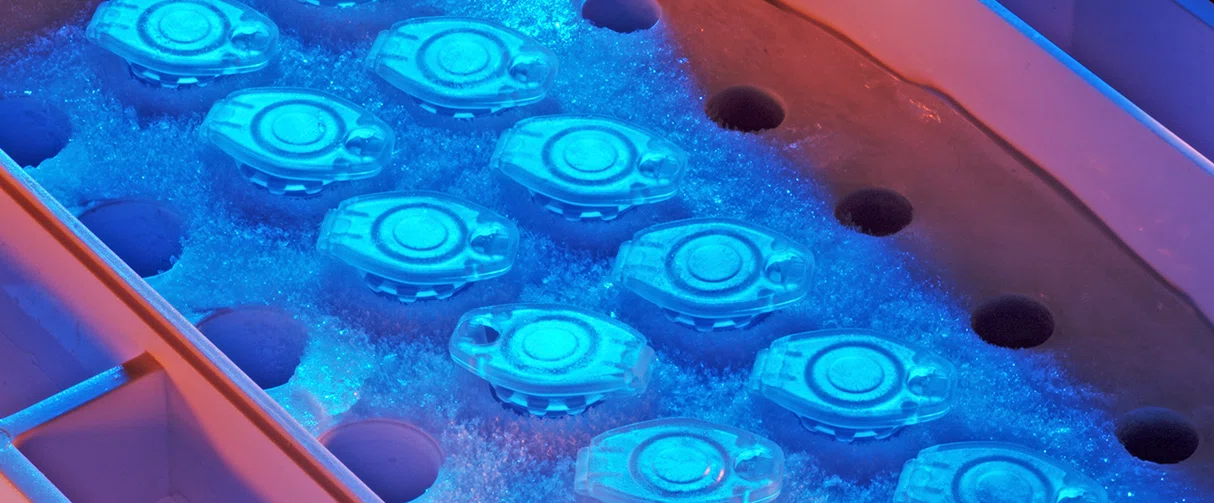


Precision Medicine
Deepening Insights into Human Brain Disease
Houston Methodist’s neural biorepository provides neurosurgery patient-derived brain tissue samples to spearhead both translational and basic neuroscience research.

When Aduhelm, a highly anticipated Alzheimer’s drug, was greenlit in June 2021, it sparked renewed hope in pushing back against a debilitating neurodegenerative disease that has crippled over 6 million of America’s elderly. Unfortunately, Aduhelm was a failure — Phase III clinical trials indicated inconclusive evidence of the drug’s action, and the therapeutic even posed unforeseen life-threatening side effects. But like many other candidate drugs that have met a similar fate, Aduhelm had outstanding evidence of success in its preclinical research phase.
Each year, several potential therapeutics make their way into the graveyard of drug development failures, costing billions of dollars and prolonging the wait for those patiently waiting for a cure. In fact, more than 30% of drugs that enter Phase II clinical trials do not progress, and 58% of drugs that pass the Phase II hurdle eventually fail in Phase III.
The sheer complexity of clinical trial design and implementation certainly contributes to this discouraging statistic. But if aspects of the human disease are not fully recapitulated in model organisms used in preclinical research, these shortcomings could then culminate in the failure of candidate drugs in clinical trials.
This concern has the research community turn toward biorepositories. These institution-maintained libraries contain patient-derived biological samples, clinical reports and other information that provide key access to disease progression in humans. Within the Texas Medical Center, Houston Methodist Biorepository Core maintains a collection of nervous system-related specimens and clinical data from consenting patients within the neural biorepository or NBRX. In addition, NBRX also contains results from drug response profiling and data gathered from genomic analysis and proteomics.
Robert Rostomily, MD,
Professor of Neurosurgery at Houston Methodist
“We now have an important infrastructure that supports studying neuro-oncology, neurodegenerative diseases, strokes and other illnesses that affect the human brain,” said Robert Rostomily, MD, John S. “Steve” Dunn, Jr. and Dagmar Dunn Pickens Gipe Chair in Brain Tumor Research and principal investigator overseeing the operations of the neurorepository. “Importantly, the access to human-derived samples means that we now have realistic platforms validate to the efficacy of candidate drugs and explore underlying disease mechanisms.”
Houston Methodist’s neurorepository, or NBRX, contributes to different areas of clinical and neuroscience research within the Texas Medical Center.
Image designed by Vandana Suresh.
Currently, a substantial portion of biomedical research is spearheaded by animal research, particularly in mice. Rodents are relatively easy to obtain, breed well in captivity and are born precocious, allowing scientists an opportunity to study developmental processes that are otherwise inaccessible in other species. Nowadays, advanced genetic and molecular tools have transformed rodents into attractive models for research.
But can research in other species stand in for that in humans? To a large extent. Conventional scientific wisdom tells us that although humans and rodents diverged from a common ancestor around 80 million years ago, certain fundamental aspects of development and physiology are evolutionarily conserved. And certainly, there has been a multitude of discoveries stemming from rodent research in areas spanning immunology, neuroscience, cancer and infectious disease. However, a deeper look often reveals species-specific differences. Neurodegenerative diseases, particularly Alzheimer’s disease, is a glaring example. The illness does not occur naturally in rodents.
“We are realizing more and more that for brain disease, the immune system is a major determinant of responses, whether in DNA damage or inflammation,” said Rostomily. “But the mouse immune system is very different from that in humans, and so it's not surprising that the work on neurodegenerative disease, intracerebral hemorrhages and strokes or have translated very poorly in humans.”
Neurorepositories, thus, fill an important gap by providing access to human-derived samples of neurodegenerative disease, cancer and other brain diseases. At Houston Methodist, patient-derived cancer cells generated from samples stored within NBRX are used to create grafts of primary brain tumors. Then, leveraging the many advantages of rodents, these xenografts are implanted into immunocompromised mice to study cancer progression. Such work has now been extended to investigate metastasized brain tumors and other central nervous system cancers.
“Our database helps people studying meningioma, and we have a group investigating primary central nervous system lymphomas,” said Rostomily. “Samples for these types of studies are very hard to come by, and we have them at our institution.”
In addition to brain cancer research, NBRX contributes to stroke studies at Houston Methodist. When a hemorrhage occurs in the brain, a slew of changes take place in response to the sudden bleed, some of which are protective while others are pathological. The mechanisms underlying the events around a stroke have yet to be fully delineated, and currently, animal models that can accurately capture the condition in humans are lacking. This hurdle, however, could be overcome with tissue collected from hemorrhagic stroke patients and stored in Houston Methodist’s neurorepository.
“We can look at the samples carefully over time to validate observations we have previously made in preclinical models,” said Muralidhar Hegde, PhD, professor of neurosurgery. “It's not just the samples but also the insights we gain from clinicians, like Dr. Rostomily, and clinical data that makes our work more relevant to the human condition.”
The initiation of NBRX has led to a substantial increase in the collection of neurosurgery patient-derived tissue samples for different types of central nervous system cancers.
Image designed by Vandana Suresh.
While an invaluable resource for brain research, the neurorepository, takes significant strategic planning. The steps involved are considerable — in and outpatient consent forms must be collected and samples from the operation theater have to be obtained, processed and stored, all while preserving participant privacy rights. Further, maintaining neurorepository-related spreadsheets, submitting protocols for approval to the Institutional Review Board and tracking consents are among the other duties that are part of the efforts.
“It’s a very complicated and labor-intensive process,” said Rostomily. “There are a lot of moving parts, and we’re still figuring out ways to get the funding needed to keep this important core facility running smoothly.”
However, with enough support, Rostomily said the neurorepository has the potential to evolve into a more exhaustive and useful database for the Texas Medical Center. In the near future, patient imaging data could be linked with existing genomic and molecular data, and research from different laboratories could be shared and updated on the database. Ultimately, such comprehensive information, he envisioned, may serve as training sets for artificial intelligence that could then integrate all of the data and assist in deciding individualized treatments for patients.
Thus, neurorepositories expand the brain researcher’s toolkit in many ways. By providing access to patient-derived tissue samples, researchers are given a window into understanding disease progression in humans, testing drug efficacy and improving therapeutics.
“It’s a privilege for us to have a neurorepository at Houston Methodist,” said Gavin Britz, MD, Candy and Tom Knudson Distinguished Centennial Chair in Neurosurgery and professor of neurosurgery. “Patients have given us consent to take their tissue and have entrusted us to make use of it to make the future better by improving lives.”
Samples collected by NBRX are shared across different institutions within the Texas Medical Center to support the collaboration between clinical and research enterprises, thereby advancing basic neuroscience and translational research.
To learn more about the core facility, please visit https://rostomily.hmailabs.org/research/.
Vandana Suresh, PhD, August 2022
Related Articles








